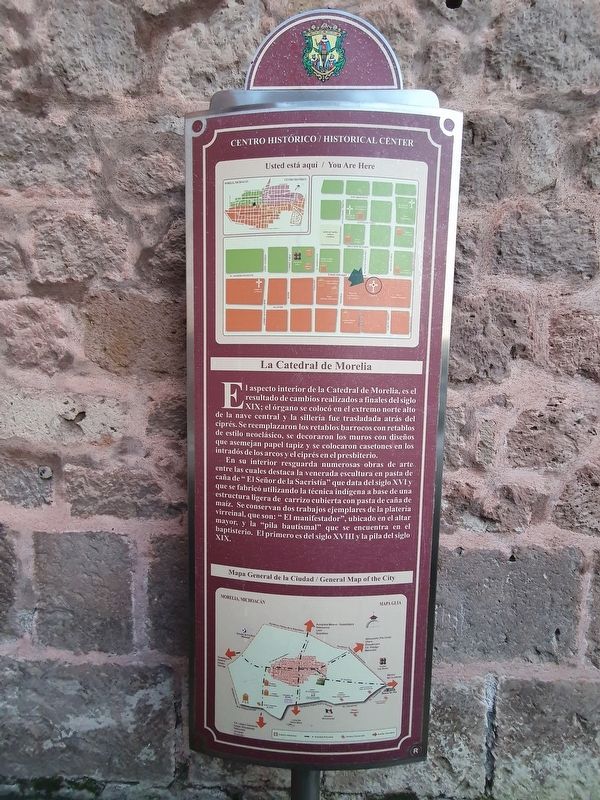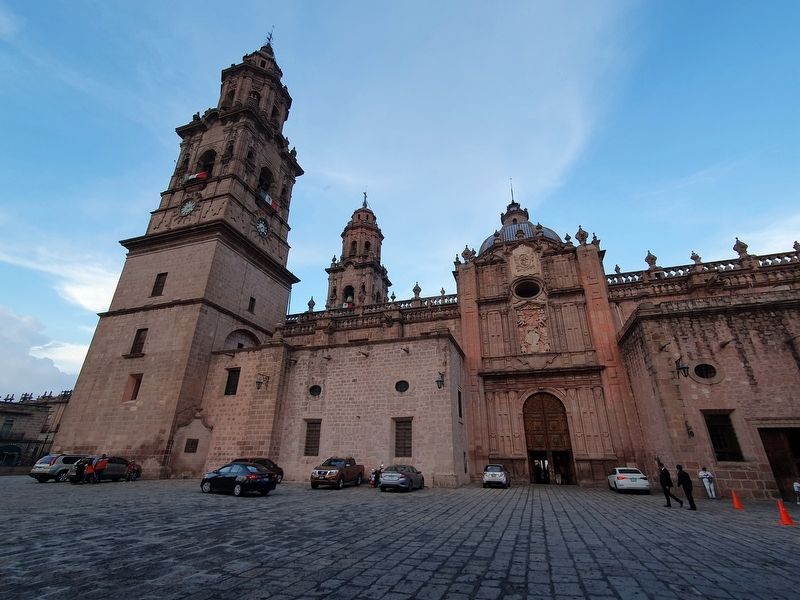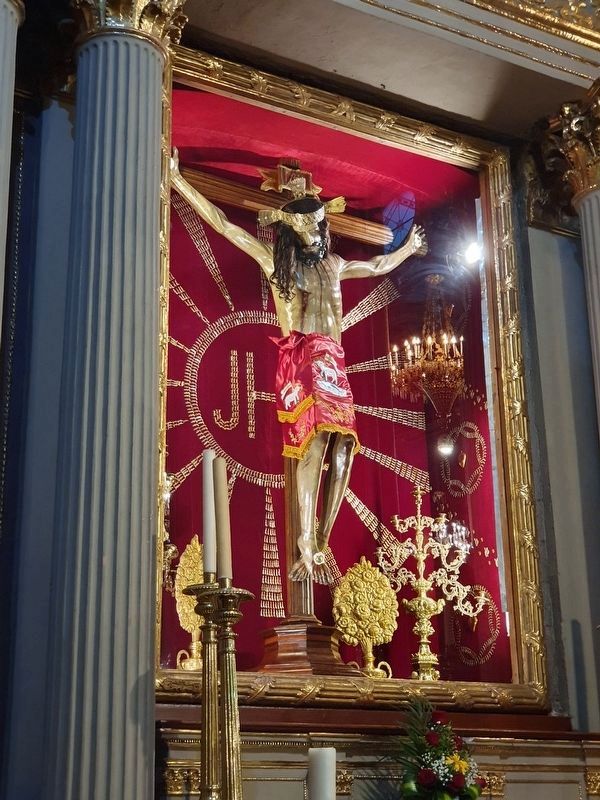Morelia, Michoacán, Mexico — The Pacific Coast (and Central Highlands)
The Cathedral of Morelia
El aspecto interior de la Catedral de Morelia, es el resultado de cambios realizados a finales del siglo XIX; el órgano se colocó en el extremo norte alto de la nave central y la sillería fue trasladada atrás del ciprés. Se reemplazaron los retablos barrocos con retablos de estilo neoclásico, se decoraron los muros con diseños que asemejan papel tapiz y se colocaron casetones en los intradós de los arcos y el ciprés en el presbiterio.
En su interior resguarda numerosas obras de arte entre las cuales destaca la venerada escultura en pasta de caña de “El Señor de la Sacristía” que data del siglo XVI y que se fabricó utilizando la técnica indígena a base de una estructura ligera de carrizo cubierta con pasta de caña de maíz. Se conservan dos trabajos ejemplares de la plateria virreinal, que son: "El manifestador”, ubicado en el altar mayor, y la “pila bautismal” que se encuentra en el baptisterio. El primero es del siglo XVIII y la pila del siglo XIX.
Mapa General de la Ciudad
The Cathedral of Morelia
The interior appearance of the Cathedral of Morelia is the result of changes made in the late nineteenth century; the organ was placed at the high north end of the central nave and the masonry was moved behind the cypress. The Baroque altarpieces were replaced with Neoclassical altarpieces, the walls were decorated with designs that resemble wallpaper and coffers were placed in the inside surfaces of the arches and the cypress in the presbytery.
Inside the cathedral houses numerous works of art among which stands out the venerated sculpture "The Lord of the Sacristy" dating from the sixteenth century and which was manufactured using the indigenous technique based on a light structure covered with a paste made from corn stalks. Two exemplary works of the viceregal silverwork are preserved, which are: "The manifestor", located on the main altar, and the "baptismal font" that is in the baptistery. The first is from the eighteenth century and the font from the nineteenth century.
General Map of the City
Topics. This historical marker is listed in these topic lists: Architecture • Churches & Religion • Colonial Era.
Location. 19° 42.132′ N, 101° 11.548′ W. Marker is in Morelia, Michoacán. Marker can be reached from Allende just east of Abasolo, on the left when traveling east. Touch for map. Marker is in this post office area: Morelia MIC 58000, Mexico. Touch for directions.
Other nearby markers. At least
8 other markers are within walking distance of this marker. Bisencio Varrocio Escallola (within shouting distance of this marker); Martyrs of Liberty (within shouting distance of this marker); Morelia Cathedral (within shouting distance of this marker); a different marker also named The Cathedral of Morelia (within shouting distance of this marker); Benito Juárez Garcia (within shouting distance of this marker); Melchor Ocampo (about 90 meters away, measured in a direct line); In Memory of the Victims of September 15, 2008 Attack (about 90 meters away); "Galeana" Portal (about 120 meters away). Touch for a list and map of all markers in Morelia.
Credits. This page was last revised on October 11, 2021. It was originally submitted on October 11, 2021, by J. Makali Bruton of Accra, Ghana. This page has been viewed 153 times since then and 25 times this year. Photos: 1, 2, 3. submitted on October 11, 2021, by J. Makali Bruton of Accra, Ghana.


